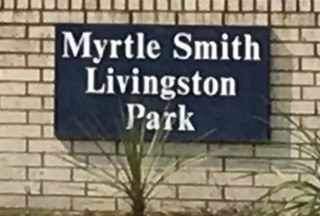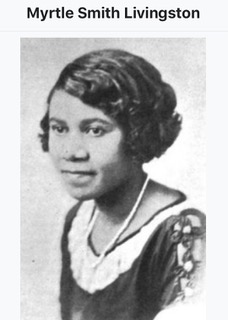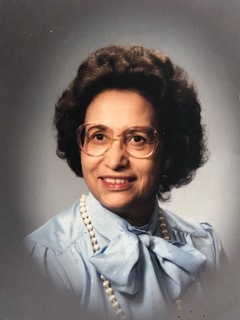If Yvonne Walker Hoard (1922-90) and Myrtle Smith Livingston (1902-74) could have peered into the future, they would have seen how their legacies continue to thrive at one of east Jefferson City's busiest intersections.
The northwest corner of the intersection of Lafayette and East Dunklin streets has been a hub of activity for many decades. It is now the location of Myrtle Smith Livingston Park and Yvonne Walker Hoard Tennis Courts.
According to a 1939 Sanford maps, a filling station was on that corner. During times of segregation, it was the heart of the Black business district. By the 1970s, it was a vacant lot after urban renewal. Lincoln University then developed the area as the Myrtle Smith Livingston Park containing two tennis courts, dedicated to Yvonne Walker Hoard in 2003.
In 2017, a combined effort of the Jefferson City Parks and Recreation and Lincoln University celebrated the opening of a renewed Myrtle Smith Livingston Park/Yvonne Walker Hoard Tennis Courts with four USTA approved tennis courts, enjoyed by tennis and pickleball players alike.
Livingston was a prominent LU physical education instructor who began teaching in 1928. She created many of the school's athletic programs for women, making it possible for females to participate in major sports for the first time. In 1946, Livingston invited Yvonne Walker to apply for a job at LU. Here Yvonne reconnected with her future husband, Charles Hoard, who was the assistant football coach at the time.
Livingston was also very active as a dancer and formed the first Orchesis (the art of dancing) Group in 1936. This was the first chapter to be installed in a historically Black college. Orchesis gave performances indoors and outdoors in the styles of interpretive dance and tap. In the 1940 Clarion, LU's campus newspaper, Livingston stated the Orchesis Dance Group was an "organization whose aim to help its members to create movement and to find joy and happiness through dance."
Livingston taught first aid classes in the Jefferson City community during World War II and was a playwright who wrote African American drama. Her award-winning play "For Unborn Children" portrayed miscegenation and lynching -- brutal realities of her time. This play became the basis of an opera, "The Barrier" by Jan Meyerowitz. Livingston retired from Lincoln in 1972, moved to Hawaii and died in 1974.
Walker Hoard taught physical education and kinesiology at LU. She became the associate director of athletics in 1974.
Yvonne's daughter, Adrienne Walker Hoard relates, "My mother was LU tennis coach from 1982 until her death in 1990. She was the winningest tennis coach in Missouri for seven years. LU's women's tennis team won the MIAA championship from 1983-1990. The national fund received for the court upgrades were based on her team record, and the fact that she was the first female vice president of the MIAA and was on track to become the first female president in 1991, had she not died in a car accident on Nov. 1, 1990, while on duty for the MIAA."
Adrienne's reminisces include remembering a photo of herself as a little girl taken with her parent's friend, Althea Gibson. Althea was a tennis coach at LU for two years (1954-56). She became the first African American athlete to win a Grand Slam tennis title and the first to win at Wimbledon in 1956.
Yvonne was married to Dr. Charles M. Hoard, a professor at Lincoln University for 42 years. He was a professor, served as dean of men, dean of students, director of students, director of health services and chairman of the psychology department. During WWII, he served as an instructor at the Tuskegee Army airfield.
Dr. Charles Hoard was the first Black Jefferson City resident to be named to a public-school committee, the earliest Black member of the Sunrise Optimist Club as well as the first Black board member of the United Missouri Bank in Jefferson City. He was an original member of the Human Rights Commission in Jefferson City (1964).
Adrienne Walker Hoard referred to her parents' involvement in community service: "All in all, they cared about Jefferson City and the quality of life for all its citizens. ... I'm grateful to know that Jefferson City cares too and remembers!"
As well as being busy professors at LU, Yvonne and Charles were dedicated parents who were fully invested in the development of all aspects of the community. They built their family's home at 815 E. Dunklin in 1956 and raised three children there.
At the completion of the tennis court complex in 2017, Denise Chapel, president of the J.C. Parks and Recreation Commission, said, "Anything that promotes health and wellness is going to give quality of life to the community." Myrtle Smith Livingston and Yvonne Walker Hoard understood and activated this philosophy many years ago.
Janet Gallaher is a current Historic City of Jefferson board member. This story is excerpted from her collection of stories on African American history in Jefferson City. Credits for information in her story include the News Tribune, LU Archives, Gary Kremer and Deborah Goldammer.




